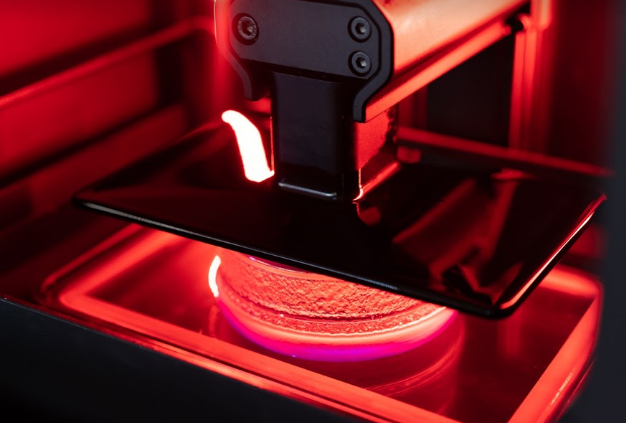Ahead of Formnext 2019, 3D printing startup Origin has announced a new partnership with German chemical company Henkel, which has resulted in a new resin designed to meet aerospace fire safety standards.
Origin, as you may remember from our interview with its CEO, has developed a novel DLP technology dubbed programmable photopolymerization (P³) that doesn’t rely on oxygen passively or actively to make the 3D printing process work. This opens up the process to a broader portfolio of resins beyond acrylates and epoxies typically used with DLP and SLA technologies.
This includes a new chemistry developed to meet UL’s 94V-0 fire safety standard and the ability to withstand 12 and 60 second vertical burn tests adhered to in the aerospace industry. While thermoplastic 3D printing has relied on varieties of PEEK, PEKK and PAEK to meet aerospace requirements, photopolymers are a different matter, with comparatively few thermosets developed that can withstand those rigid criteria.
For this reason, Henkel joined forces with Origin, who boast an open materials strategy in order to more quickly and more flexibly expand the variety of resins that are compatible with P³. Henkel, too, has an open materials approach, hoping to work directly with 3D printer companies to create new chemistries. HP has deployed a similar model for the same reasons. This stands in stark contrast with companies like 3D Systems and Formlabs, which develop materials in-house, thus limiting the variety available to customers, but increasing material-based revenue for the manufacturers.
Of this open materials philosophy, Origin CEO Chris Prucha said, “Since its inception, we have been committed to an open materials approach. We were able to specifically program the Origin One to meet the environmental conditions needed to cure the material in a way that activates Henkel’s innovative chemistry, creating 3D printed parts that set a new standard for fire resistance. It’s a perfect example of how open collaboration between technology providers and materials companies should work, and we’re excited about the opportunities it creates for our clients and their end users.”
Origin has already begun shipping its Origin One 3D printers to customers and aims to enable mass additive production through the use of modular hardware and, later one, the introduction of automated solutions. P³ technology is billed by the company to maintain tight controls over light, temperature and other environmental variables, with prints optimized automatically in real-time. The extent to which this will impact the 3D printing industry and larger world of manufacturing remains to be seen, but it is an exciting technology nonetheless.
If you’ll be attending, Henkel will be exhibiting the new material at Formnext in Frankfurt, hall 12.1, booth C41.
Discuss this and other 3D printing topics at 3DPrintBoard.com or share your thoughts below.
